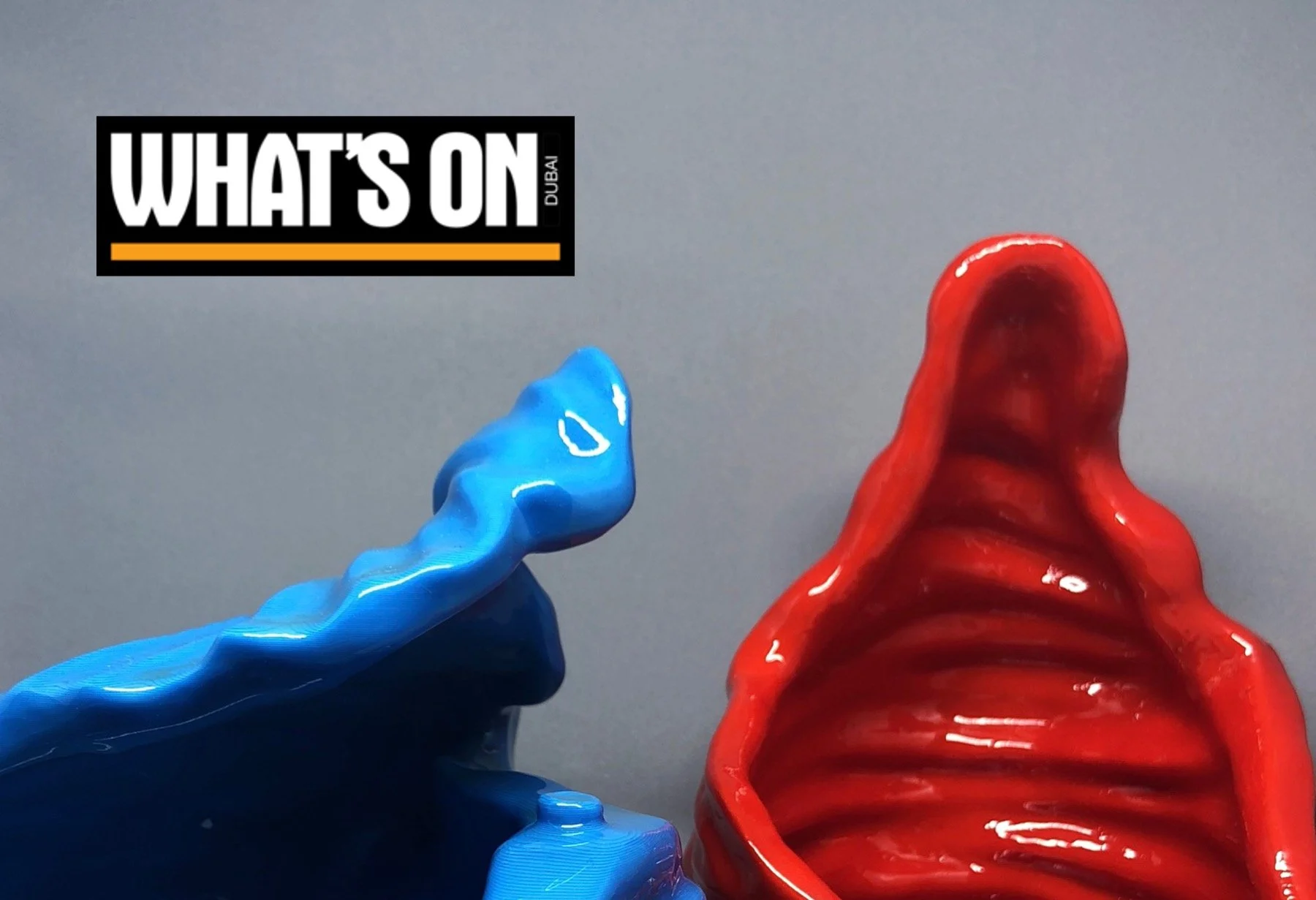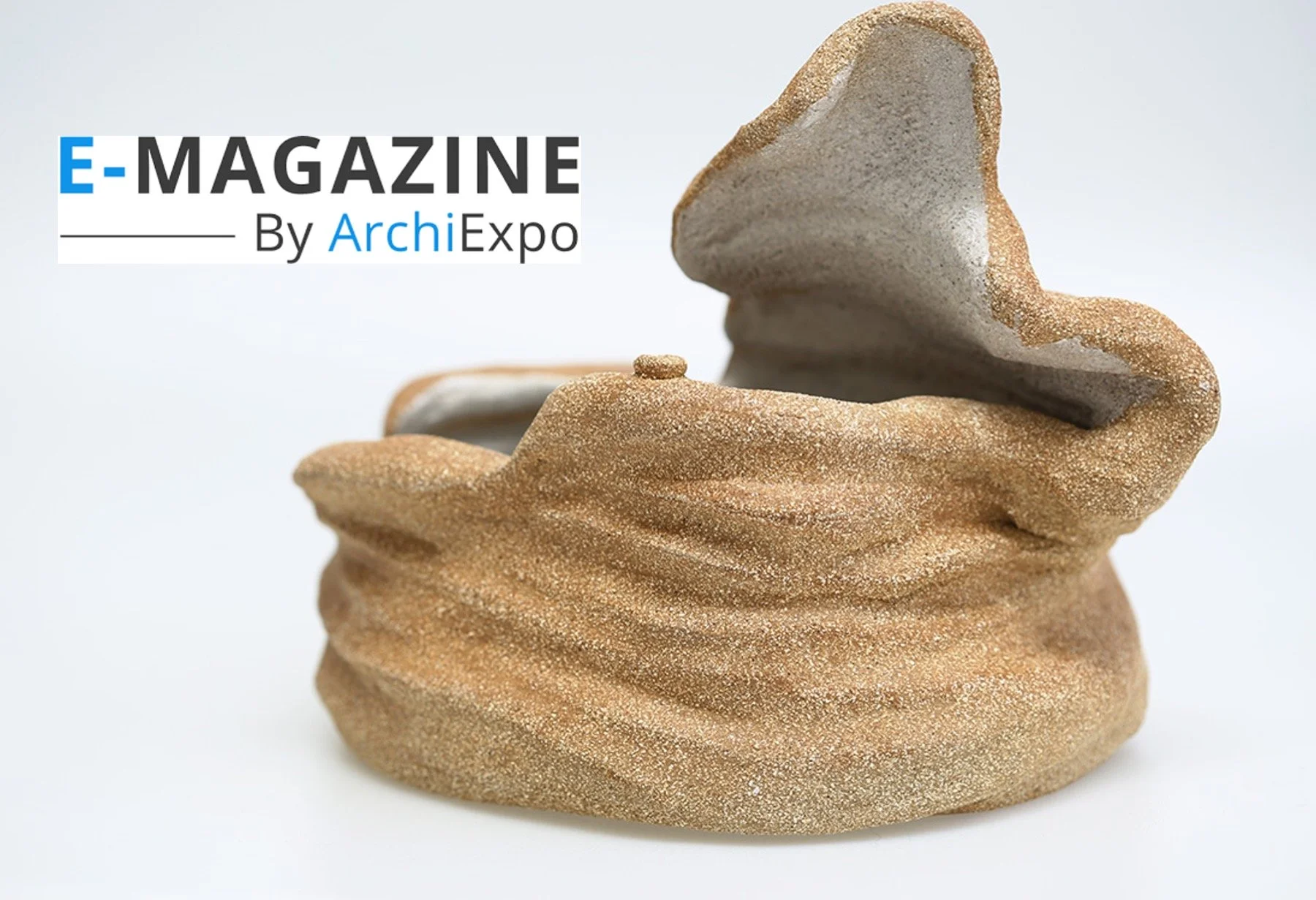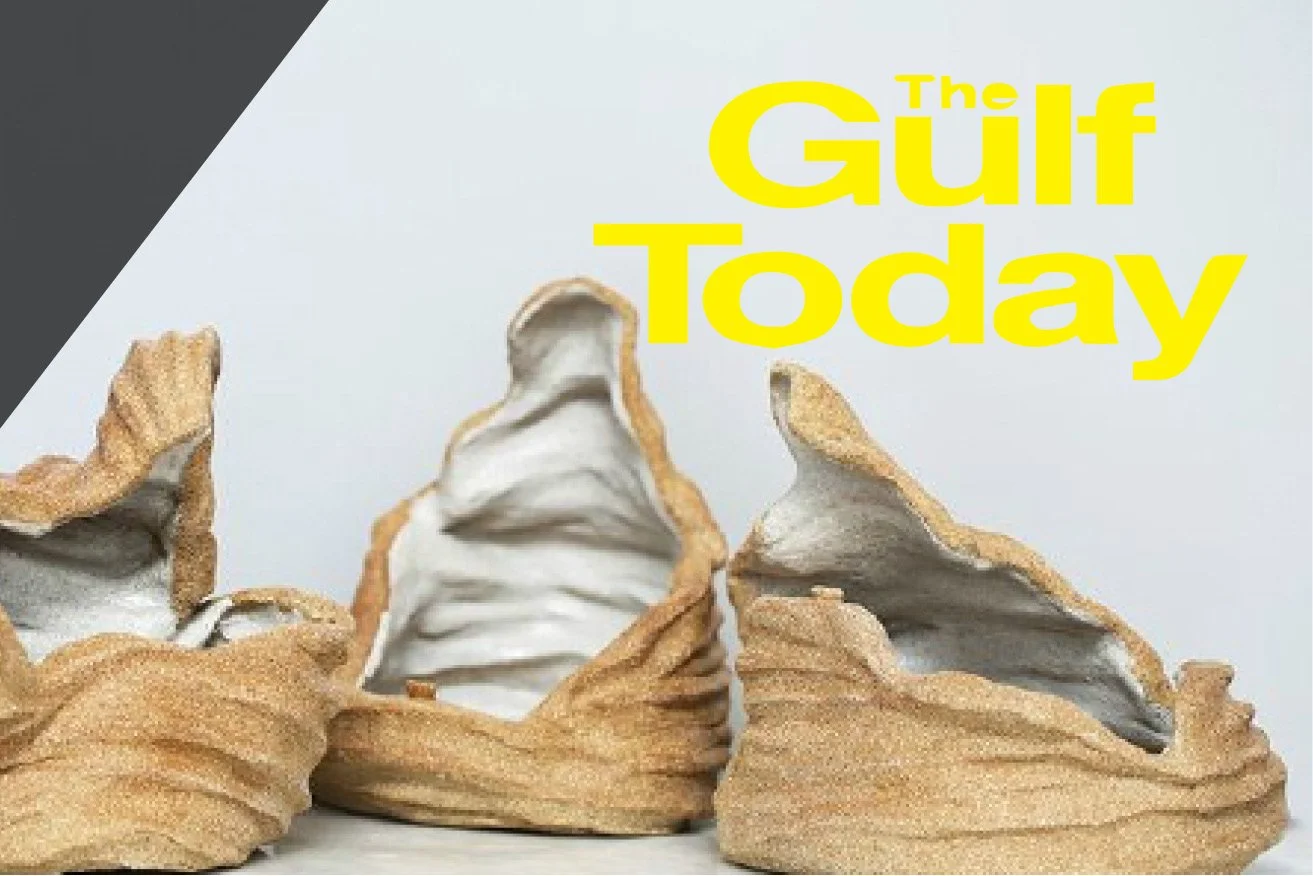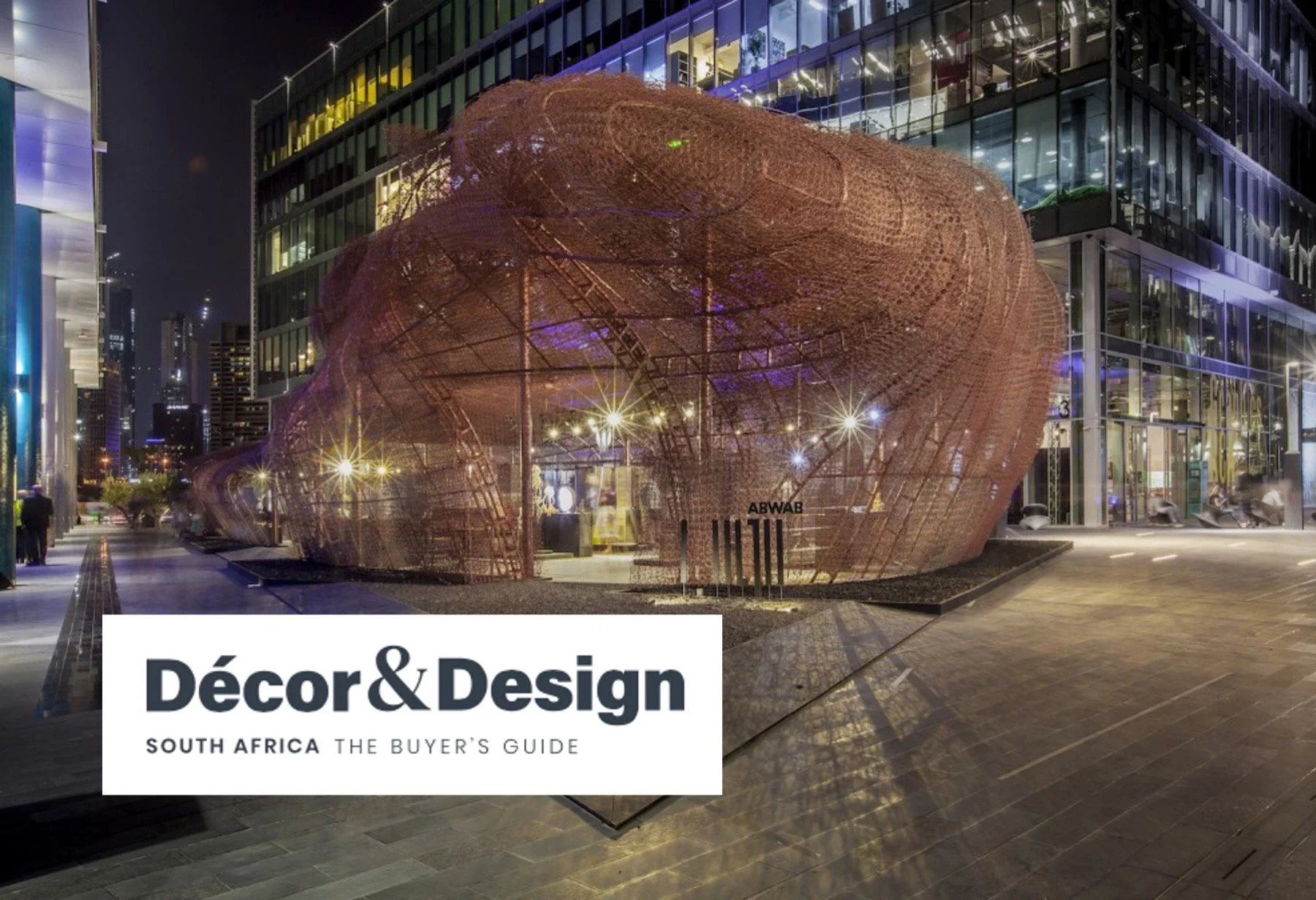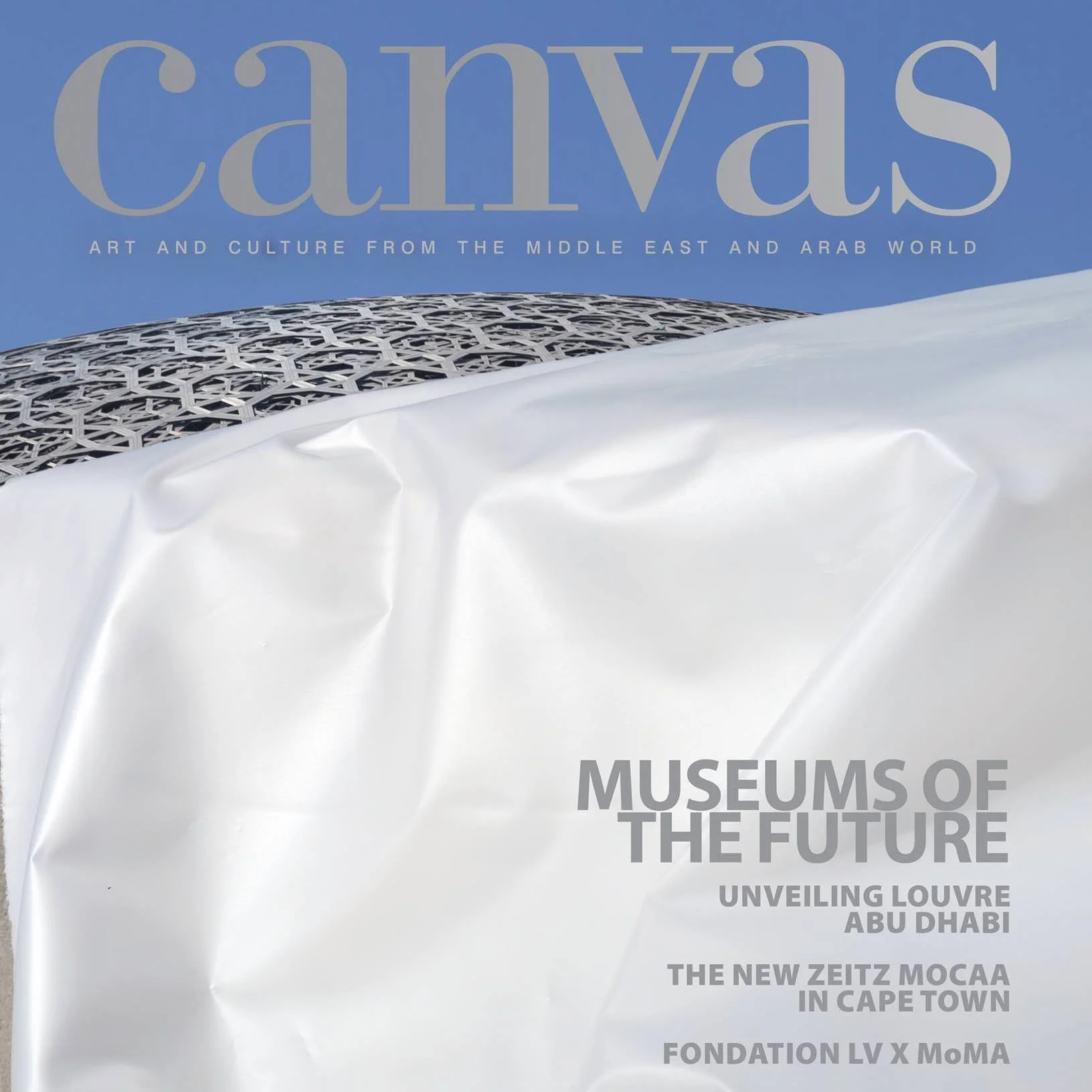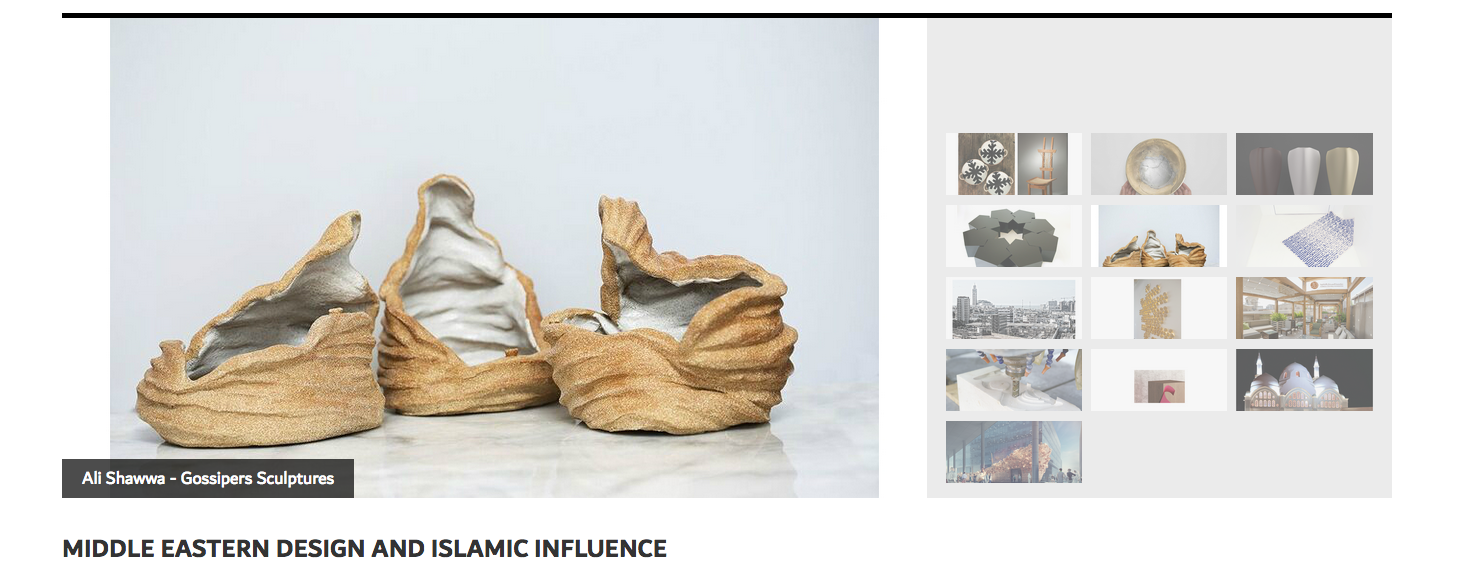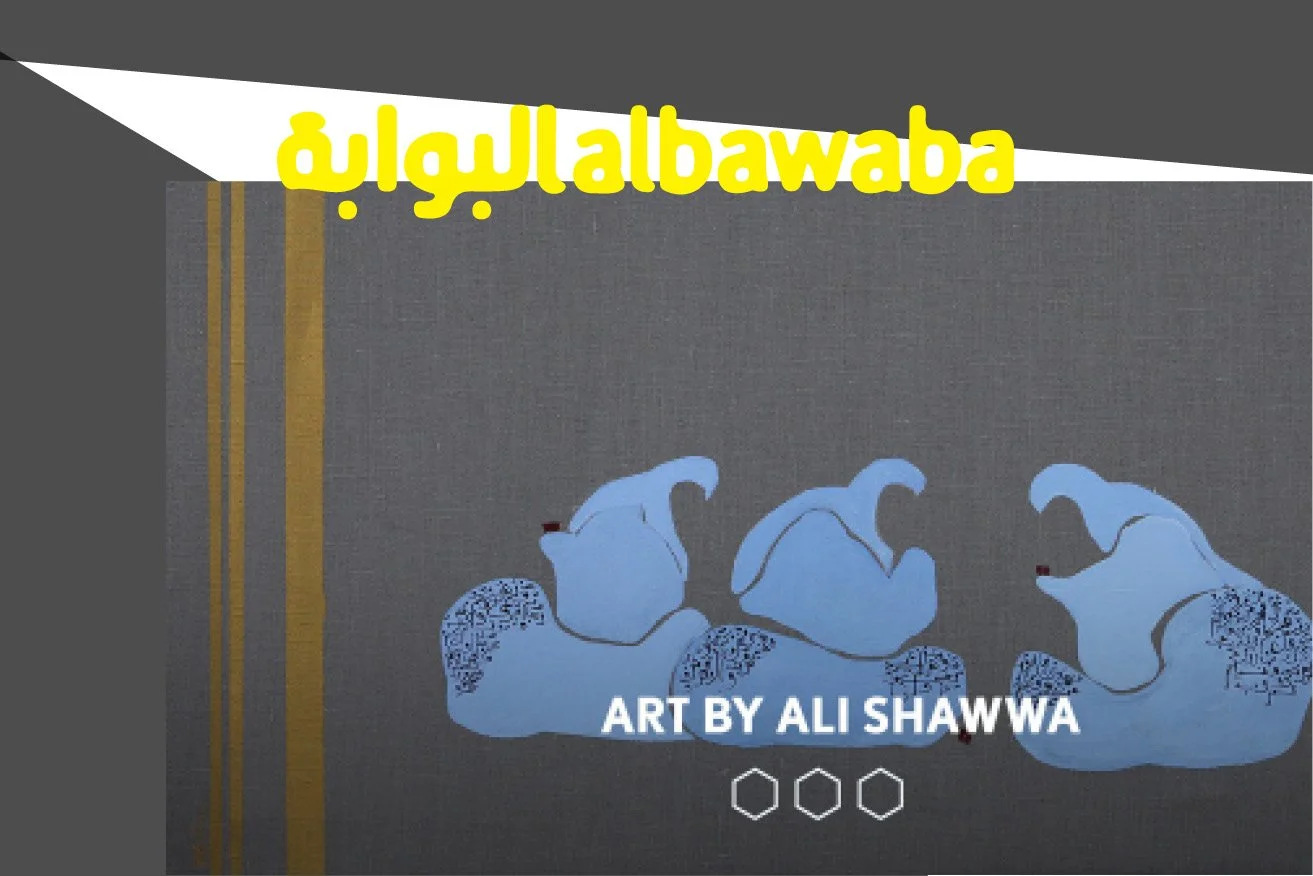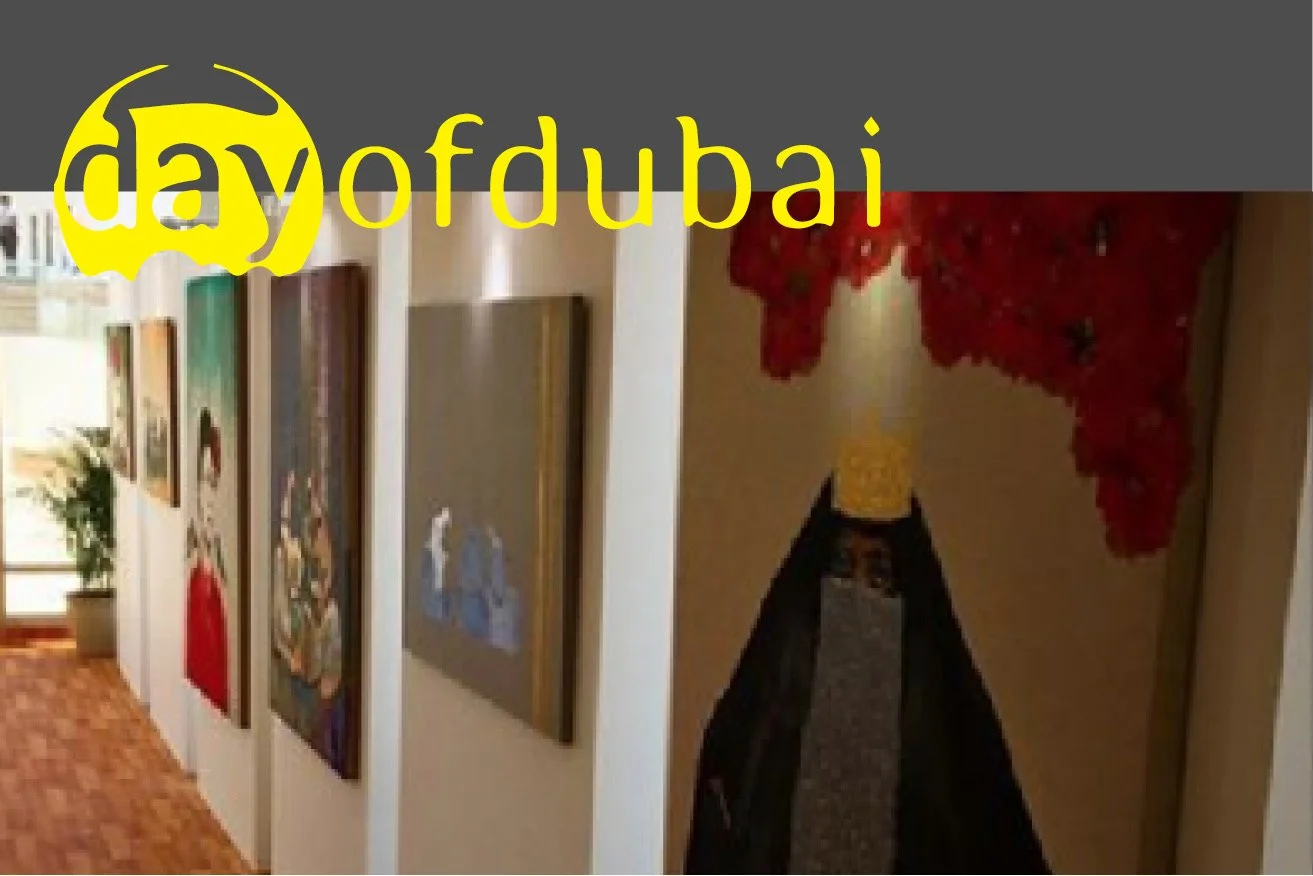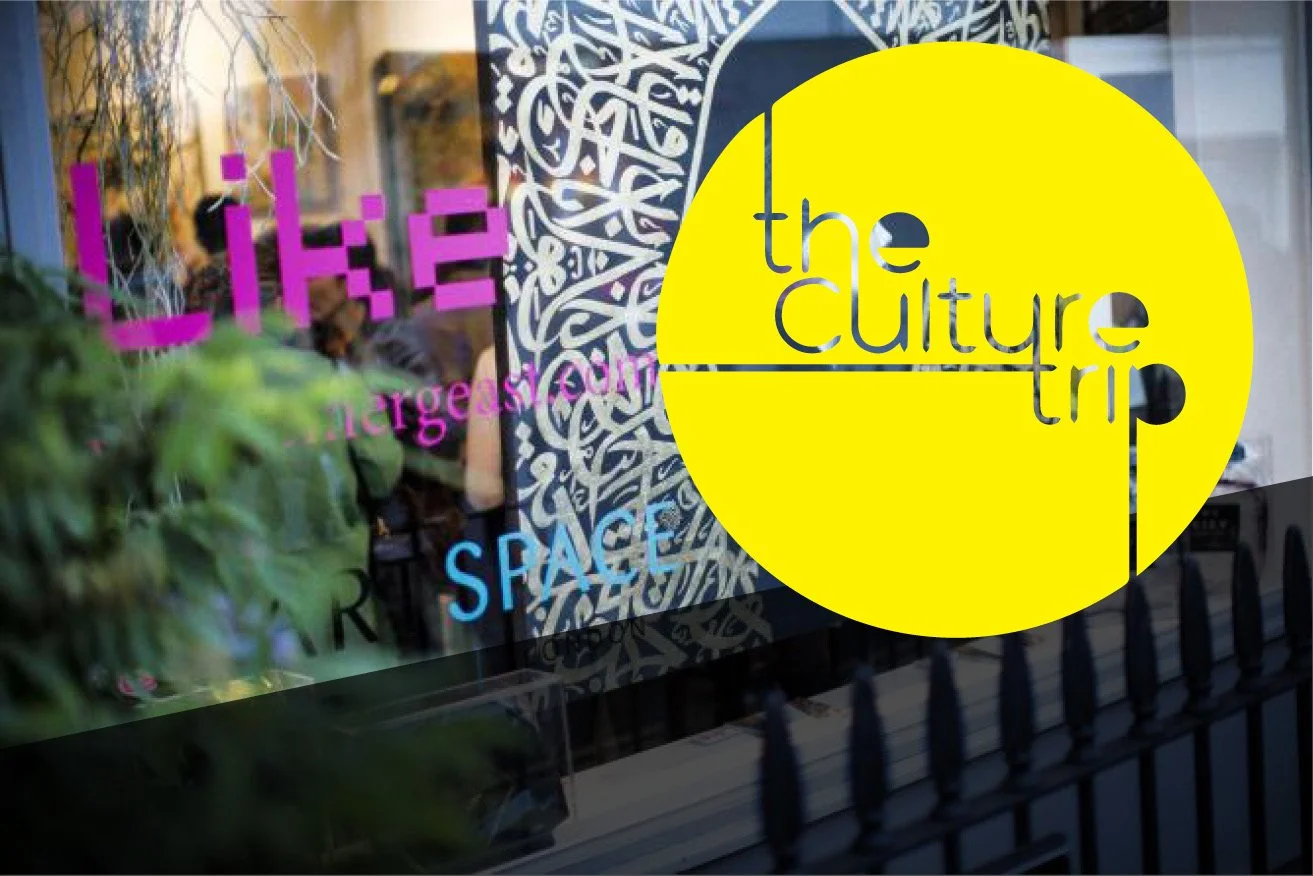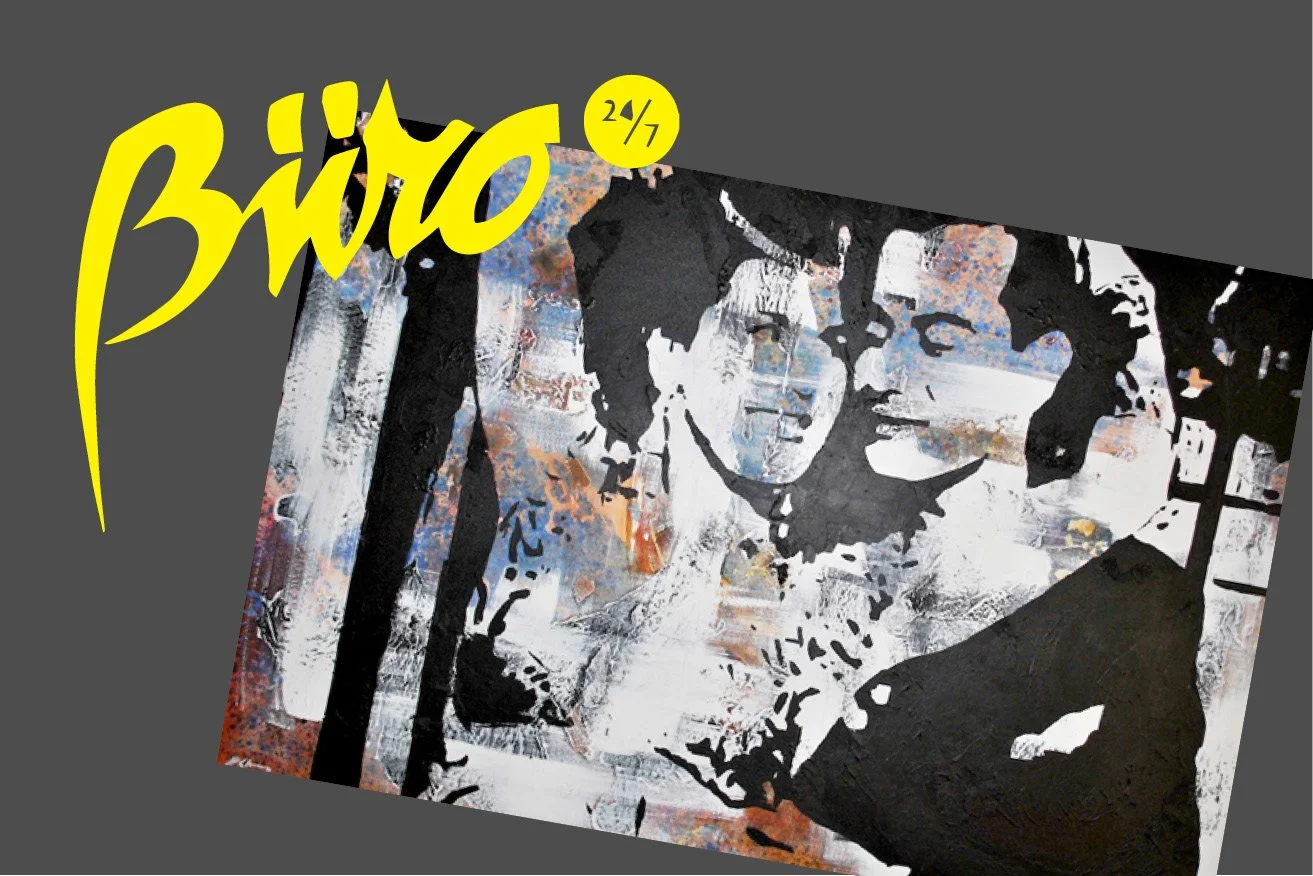The National: Art & Culture
April 26, 2021
Dubai Culture X Al Seef
Al Seef has collaborated with Dubai Culture to present art along its waterfront promenade located close to the Al Fahidi Historical District. The outdoor art gallery includes drawings, paintings, sculptures and video installations by various local artists. Works include Arabic calligrapher Mohamed Elagaty’s augmented reality animation and Ali Shawwa’s 3D-printed Gossipers sculptures from the region that have become motifs, including sand dunes, coffee cups and abayas. There are also outdoor installations by Yara Manla and Raghad and Asma Ahmed Shikoh, alongside paintings by Masarra Fatima Sulaimani.
*source The National
Arte & Lusso
April 25, 2021
Al Seef Hosts Art Night
Al Seef, hosts a stunning outdoor art gallery in collaboration with Dubai Culture. The perfect venue to discover your love of art as you appreciate the works of multi-disciplinary artists – from drawings and paintings, to sculptures and video installations. Al Seef is engaging with popular artists in the local art circuit, including Asma Ahmed Shikoh, whose work highlights the importance of a spiritual heart. Her magnificent outdoor installation is inspired by the power of weathervanes and weaves in the subtle message of embracing the divine environment we live in. Ali Shawwa uses his 3D printed Gossipers sculptures with Middle Eastern characteristics that are unique to the region – from sand dunes to Arabic coffee cups and Abayas.
*source Arte & Lusso
What’s On
April 26, 2021
Stunning Outdoor Art Gallery
Dubai’s popular waterfront promenade has collaborated with Dubai Culture to host a stunning outdoor art gallery in Al Seef. At the venue, there are 3D artworks on display byAli Shawwa. His Gossipers sculptures highlight Middle Eastern Arab characteristics that are unique to the region from sand dunes to Arabic coffee cups and abayas.
*source What's On
ArchiExpo Magazine
February 26, 2021 (updated)
Outlets Draw the Design Community
How do you create a local design culture from scratch? For cultural players in the United Arab Emirates, the answer was two-part: launch creative outlets and build a design district. Launched in 2012, Design Days Dubai was the first such showcase. It is now the leading fair dedicated to collectible and limited-edition furniture and design objects in the Middle East and South Asia. In 2015, it was followed by Dubai Design Week, which just completed its biggest program to date. The six-day event—November 13-18—included exhibitions, installations, talks and educational workshops. Among them were Downtown Design, a carefully edited roster of established and emerging international brands across a broad range of product categories. Another, the Global Grad Show, represented 92 of the world’s best design schools from 43 countries and was the largest student gathering ever. And there was Abwab (“doors” in Arabic), which exhibited work from countries in the Middle East North Africa and South Asia (MENASA) region. Rue Kothari, show director of Downtown Design, spoke to ArchiExpo e-Magazine, recalls: Gossipers, a series of ceramic sculptures by Ali Shawwa to counter gossiping was shown in Dubai Design Week’s Abwab exhibit.
*source ArchiExpo e-Magazine
Gulf News
March 20, 2018
Design Diary: Ali Shawwa’s Art Showcases His Complex Roots
Ahead of his Dubai show, the contemporary artist looks back at his journey of self-discovery and what lies ahead.
It is very difficult to put Ali Shawwa in a box; in any box.
A Kuwaiti of Palestinian origin. He draws inspiration from the nomadic desert and the mystical writings of Paulo Coelho. His art mirrors his multi-cultural being as he shifts between the mediums of painting and sculpting, drawing from his Middle Eastern heritage and Mediterranean connection, superimposing it with the current milieu.
“Growing up, I felt peaceful and complete when I painted,” he recalls. Eager to learn, he signed up for elective creative and art history classes his university offered to not only learn the various styles, but more importantly gain perspective and form his own artistic voice. “Eventually I realised that I never wanted a style to burden or limit me. Currently, I feel relatively well-rounded in my process. Like me, my work is constantly evolving — as it should be.”
After graduation, the renowned architect and artist Maath Alousi took Shawwa under his wing. A growing command over the brush buoyed a shift to a more tangible form — sculptures. He then turned to the internationally acclaimed Cypriot master potter Valentinos Charalambous. Giving his protege direction beyond mere technique, Charalambous shared the philosophy and attitude that guides Shawwa’s current works.
In late 2015, Shawwa was invited to participate in a charity auction organised by Emergeast, the first online art gallery for emerging Middle Eastern artists. His artwork, Farid and Tahiya, turned out to be the biggest draw of the evening. This recognition not only gave him confidence, it also opened doors to the secretive and often clique-ish world of art.
Superimposed, his solo show that opens this week, is characteristic of Shawwa’s interplay of layers, texture, contrasting colours and reflective metallic elements.
The centrepiece of Shawaa’s new show is a sculpture that exemplifies the kind of artist that will hold forth in the years to come — one who is on the intersection of fine arts, humanity and high tech.
Gossipers started as a sketch in 1997, and quite unlike this consistent human trait, the series has constantly evolved. From watercolours, acrylic and ‘quick sand’ process, to ceramic sculptures glazed with Cypriote minerals, the series has maintained its connect with nature.
For his new show, Shawwa wanted to elevate the series to more contemporary platform. “I approached Immensa Technology Labs, the UAE’s first 3D printing facility, and worked closely with their team to produce a 3D printed edition of the Gossipers,” he says. “The one thing that remains consistent in my gossipers is that they all have coffee cups in their laps and you can almost hear them murmur!”
—————————
Superimposed runs at Dubai Design District, from March 28 until April 10.
*source Gulf News
The Gulf Today
November 23, 2017
Dubai Design Week 2017: Shimmering Designs, Sparkling Discussions
One of the high points of Dubai Design Week’s third edition (DXBDW, Nov. 13 – 18) was the wide selection of Middle Eastern and Islamic focused projects. Visitors were treated to a variety of offerings in this genre, from traditional Middle Eastern craftsmanship to Islamic inspired architecture and design.
Middle Eastern inspired pieces included. Ali Shawwa’s ‘Gossipers Sculptures’, which considered Middle Eastern characteristics from sand dunes, abayas and Arabic coffee cups.
*source The Gulf Today
The Design Boom
November 22, 2017
Highlighting Dubai’s Central Role in the Region’s Creative Scene
The abwab pavilion is the show’s key exhibition for highlighting regional design talent from the middle east, North Africa and South Asia. starting at the inaugural Dubai Design Week 2015, each edition welcomes a diverse and unique array of creative talent, with the 2017 version grouping the exhibitors in a singular space for the first time. its aim is to not only empower design and designers through exposure, but to highlight Dubai’s central role in the region’s creative scene.
*source The Design Boom
South African Decor & Design
November 11, 2017
Dubai Design Week
The popular Abwab pavilion returns this year, showcasing 46 works from designers and creatives from across the MENASA region. From furniture and product design, to textiles and graphic design, the pavilion is a celebration of the burgeoning creative communities in the region. Ali Shawwa’s ‘Gossipers Sculptures’ is an attempt at recognizing the integral role the social interaction, gossiping, plays in human connection. The work considers Middle Eastern characteristics from the sand dunes, abayas and Arabic coffee cups.
*source www.sadecor.co.za
Canvas Magazine
November 11, 2017
Design Boom
Dubai Design Week 2017 was filled with regional design exhibits, talks and workshops. To take a closer look, Canvas highlighted some of the most exciting innovations this year, including Ali Shawwa's crumpled "Gossipers Sculptures" at Abwab, Khalid Shafar's "Silent Call" kinetic light installation at Around the City and a concept to re-design oil silos to become "Waterfront Tanks" by Badih Rameh at the Global Grad Show. To find out more, find the latest November/December Canvas issue.
There is something distinctive about a design week,” says William Knight, new Head of Design for the Art Dubai Group, at a press briefing for the third annual Dubai Design Week (DDW) which runs this November. Dubai may have an edge over other global cities because of d3, a purpose-built destination for design, which acts as the central hub for the event. With new sites on the waterfront and a record number of installations across the district, d3 will be brimming with activity.
In its first two editions, Abwab, the showcase for regional design, presented country-specific curated pavilions. This time it has a more experimental structure, its final selection of 45 designs from 15 countries were sourced using the design domino concept, where one designer nominated another. It proved popular. One participant, Ali Shawwa, says: “The selection process sparked an unpredictable and unique network within creative communities across the region.” Shawwa will be exhibiting an evocative piece in ceramic entitled The Gossipers, a trio of crumpled forms which seem to interact, the clear glaze enhancing the naturally grainy properties of the clay, symbolic of sand dunes. Shawwa’s ‘Gossipers Sculptures’, which considered Middle Eastern characteristics from sand dunes, abayas and Arabic coffee cups.
*source Canvas Magazine
Elle Decor Italia
October 20, 2017
Dubai Design Week 2017
200 events, trade shows and treats for buyers and collectors: everything you need to know about the Dubai Design Week. While Italian design is mainly connected to industry, the Middle East entertains a far deeper relationship with the world of handicraft and the reinterpretation of traditional techniques and materials, which have been developing in the area in the course of thousands of years.
One should consider this when writing about the Dubai Design Week, as well as the fact that when we talk about the Middle East, we are referring to an incredibly extended area, composed of countries that feature huge economic, social, geographical and cultural differences. And all of them are sharing a time of great transformations that are rapidly changing their traditional image. In Dubai, and more generally in the United Arab Emirates, this is embodied by a strong impetus towards the future. An impulse which is further accelerated by the upcoming inauguration of the 2020 Universal Exposition, with a significant growth in the tourism industry, and – especially in the last few years – the rediscovery of their own cultural heritage, with the subsequent opening of brand-new museums and the enhancement of local designers and enterprises.
*source Elle Decor Italia
DUBAI DESIGN WEEK
October 18, 2017
The Abwab exhibition is Dubai Design Week’s key event for highlighting regional design talent from the Middle East, North Africa and South Asia and is the only initiative of its kind in these regions. This year, an editorial board selected the works on display. Below we highlight editorial board member, Rawan Kashkoush’s top selections:
1. Ali Shawwa - Gossipers Sculptures
2. Anjali Srinivasan - Quiver Vessels
3. Loci Architecture & Design – Sr.
4. Salim – (x)
5. Coalesce Design Studio - Ralli
6. Siba Sahabi - Perspective Nr.1
7. Soukaina Aziz El Idrissi - Chemistry’s Greatest Achievement
8. Hozan Zangana – Sufi Vase
9. Hicham Lahlou – Big Black One
10. Mahmoud El Dallas – Cairotales
11. Yacob Sughair – Jacob 15
12. Dima Srouji – Hollow Forms
13. Saffar - Kawther Alsaffar – Dual Bowls
14. Bahraini Danish – Shelves no.01
*source DDWeek
Dubai Design District
October 17, 2017
Middle Eastern Design
From traditional Middle Eastern craftsmanship to Islamic inspired architecture and design, this Dubai Design Week hosts a wide selection of Middle Eastern and Islamic focused projects and events across the city for visitors to enjoy.
For exhibitions, Iconic City returns to Dubai Design Week, this year shining a light on the North African city, Casablanca. The exhibition, titled ‘Loading…Casa’ is curated by Salma Lahlou, and will showcase new works from a sound artist, graphic designer, photographer and interior architect to portray the city she lives and breathes: Casablanca. Once Upon Design exhibition, Curated by Noor Aldabbagh showcases works by architects, product designers and graphic designers experimenting with elements of heritage from the Arabian Peninsula. The works focus on customs and oral traditions inherited through generations that are implicitly linked to spaces.
Visitors can head to Albastakiya, for a full programme of talks, workshops, film screenings and walks as well as an exhibition organized by the Alserkal Cultural Foundation. Concrete, Alserkal presents While We Wait, the meditative, immersive installation designed by Palestinian architects and designers Elias and Yousef Anastas. While We Wait is comprised of pieces of stone quarried in various regions of Palestine, which fit together to form a large, lattice-like, self-supporting structure. Produced in Palestine, elements of the process use traditional techniques from the region.
Many projects and pieces on display are also inspired by the regions culture and Islamic traditions. Designer Fadi Sarieddine joins forces with Nadine Kanso for a special collection to mark the third edition of Dubai Design Week. The Khawatir collection brings together their creative worlds as Sarieddine applies the Calligraphy designs of Kanso to a collection of mirrors and seating.
Furthermore Design Tech Services will be launching the book ‘Sacred Light’.The book explores how natural and artificial light have played a big role throughout the history of sacred Islamic Architecture,
The popular Abwab pavilion returns this year, showcasing 46 works from designers and creatives from across the MENASA region. From furniture and product design, to textiles and graphic design, the pavilion is a celebration of the burgeoning creative communities in the region. Middle Eastern and Islamic inspired pieces include:
Bouchra Boudoua’s SKOURA collection, designed and created in collaboration with Morrocan potters. Made from a locally sourced clay from the region of Ourika Valley, the collection is inspired from old mud houses one can find in the Berber villages of the High and Mid Atlas Mountains of Morocco.
Jassim Alnashmi’s ‘Culture Cross’ chair which is the physical manifestation of the merging of East and West cultures, which is strongly present in the principles of design.
Ali Shawwa’s ‘Gossipers Sculptures’ is an attempt at recognizing the integral role the social interaction, gossiping, plays in human connection. The work considers Middle Eastern characteristics from the sand dunes, abayas and Arabic coffee cups.
Hozan Zangana’s ‘Sufi Vase’ is inspired by the spiritual dance named Sufi. The silhouette of the wide dress, shaped by arms and shoulders, is also a well-known motif in Middle East, architecture, used to embellish cupolas and ceilings.
Kuwait-based Kawther Alsaffar presents ‘Dual Bowls’ developed from studying Kuwaiti sand casting with Alwafi craftsmen and discovering untapped potential for dual metal casting in Kuwait. This process is unique to the capabilities of the Alwafi workshop.
The Zawya Coffee Table, created by UAE-based The Hub Interiors Takes its roots in traditional Islamic heritage. The table re-imagines the symbol of the Islamic star using geometric principles. It caters to varying seating areas, the extruded Islamic star is a versatile living space furniture feature.
Dubai-based Lujain Abulfaraj’s project ‘DHADH’ is an homage to the Arabic language, and is named after the letter that is unique to it. Comprising eight unique modules that can be combined and recombined to create the entire 28 Arabic letters, Abulfaraj has expanded her typographic experiments into huge foam structures with a trilateral purpose – as a furniture piece, a plaything and a letterform.
Traditional prayer mats are used five times a day, transforming any non-religious space into a sanctuary. As they are unidirectional rather than symmetrical, the top end of the prayer mat includes lettering as a motif. The Sajjadah 01 prayer mat by Rasha Dakkak uses calligraphic text as its motif, inviting every Muslim to pray, and inspiring contemplation by shifting across semiotic registers.
*source DDWDubai Design District
Albawaba
June 6, 2017
EMAAR's Dubai Creek Harbour has set a new experience by the calm waters of the Dubai Creek. In an extremely different atmosphere, unlike any type of in the city, at RISE - Dubai Creek Harbour' has been meticulously curated to mark the spirit of togetherness. Both Tashkeel and Sharjah Art Foundation will lead workshops and exhibitions.
Dubai Creek Harbour holds an exhibition of works by Ali Shawwa. Characterised by its interaction of layers, structure and reflective metallic elements, the Kuwaiti artist's latest collection weaves the dualities between portraits and nature.
*source Albawaba
Day Of Dubai
May 29, 2017
EMAAR's Dubai Creek Harbour has set a new experience by the calm waters of the Dubai Creek. In an extremely different atmosphere, unlike any type of in the city, at RISE - Dubai Creek Harbour' has been meticulously curated to mark the spirit of togetherness. Both Tashkeel and Sharjah Art Foundation will lead workshops and exhibitions.
Dubai Creek Harbour holds an exhibition of works by Ali Shawwa. Characterised by its interaction of layers, structure and reflective metallic elements, the Kuwaiti artist's latest collection weaves the dualities between portraits and nature.
*source Days of Dubai
RISE by EMAAR
May 26, 2017
Unique Exhibition at RISE
May 26 - June 24, 2017, RISE at Dubai Creek Harbour transformed into a unique cultural experience. The space overlooking the unparalleled views of the Dubai skyline, offered visitors an opportunity to discover EMAAR's modern design, with cultural influences and special programming, inspiring them to experience RISE DCH.
Artist Ali Shawwa’s work will be on display. Characterized by its interplay of layers, texture and reflective metallic elements, the Kuwaiti artist’s latest collection weaves the dualities between portraits and nature, where abstract flora and fauna are superimposed and become a prominent motif throughout the work. Visit #RiseDCH to experience this unique exhibition only at EMAAR's Dubai Creek Harbour.
*source EMAAR RISE DCH
The Culture Trip
December 12, 2015
Curated By An Online Following
The Like pop up presented artworks by fifteen emerging Middle Eastern artists, including Azadeh Etebarian, Janet Hagobian, and Anas Homsi to name a few. Here we delve further into EMERGEAST’s first collective exhibition in London.
The opening night of the four-day pop up saw a full house with over 150 visitors — the demographic ranged from established collectors to industry specialists and curious creatives from London’s East End. Over half of the artworks found new homes on opening night, proving the marked enthusiasm from the crowd as the Like exhibition was specifically engineered to encourage young collectors and enthusiasts to engage in dialogue, inquire and acquire about the artworks at affordable prices.
‘Art is perceived as “expensive” as established collectors allocate funds for their collection — EMERGEAST has managed to open the doors for young and new collectors wanting to acquire art minus the large price tag. This also allows emerging artists to flourish internationally’ – Dana Awartani, Saudi Arabian Islamic artist
First of its kind, the Like exhibition was curated by EMERGEAST followers, as the fifteen artists who garnered the most clicks, hits and clicks were put on display. You liked it, you got it! Double taps transcended into reality as followers had the opportunity to view artworks by their favourite artists. Staying true to their digital identity, the EMERGEAST team encouraged their audience to interact with the artworks and truly contemplate their ‘Like,’ ultimately sticking their ‘Like’ to make their mark on their favourites. The exhibition, therefore, doubled as a thought-provoking installation to urge visitors to contemplate and consider their digital personas. Like brought forth a reinvention of the traditional exhibition by manifesting the digital realm in a physical space.
The EMERGEAST Like exhibition was a great opportunity for London-based collectors, both established and young, to discover emerging talent from the Middle East. The EMERGEAST following were left with no shortage of art forms and themes — from calligraphy to pop art, street art to digital compilations, the variety of artworks catered to a large and diverse audience. With four artists present at the opening night, visitors were inspired to interact with the artists and discuss the unique and avant-garde works in depth. ‘I thoroughly enjoyed the diversity of the visiting audience, embracing and inquiring about my digital compilations,’ said Nic Courdy, exhibiting EMERGEAST artist present at Like.
As interest in Middle Eastern art flourishes, it is evident that London-based young collectors also want a slice of the cake. Hand in hand, young collectors and emerging artists are growing together under one umbrella. EMERGEAST’s pop up exhibition will see a second edition in the near future.
Artists exhibiting: Ibrahim Al Atiyah, Ghada Al Muhammedi, Nic Courdy, Hossein Edalatkhah, Azadeh Etebarian, Elham Etemadi, Amir Ershadi, Janet Hagobian, Keyvan Heydari, Anas Homsi, Monther Jawabreh, Siddiqa Juma, Manou Marzban, Mo Negm and Ali Shawwa.
*source TheCultureTrip
Burro 247
November 12, 2015
EMERGEAST Auction 2.0: Art for the new generation
Artists and collectors converged at the Vida Downtown Dubai last night for the EMERGEAST Auction 2.0. Following the success of the first edition in March, Auction 2.0 saw an even greater number or artworks going under the hammer.
Emerging artists from across the region were represented including Iranian Keyvan Heydari, Emirati Siddiqa Juma, Sudanese Khalid Albaih and many more. Out of the 25 artworks displayed in the catalogue, only four remain unsold.
The biggest draw of the night was Kuwaiti Ali Shawwa's acrylic painting, 'Farid And Tahiya'. Starting at a bid of Dhs9550, the bidding war quickly escalated and in the end, the painting sold for Dhs22,000.
Three additional undisplayed pieces were also auctioned off and sales from these went to the Palestine Children's Relief Fund (PCRF).
*source Burro247
Al Arte Magazine
September 3, 2015
‘Like’ pop up exhibition highlights emerging Middle Eastern artists
The “Like” pop up presents EMERGEAST’s first collective exhibition in the UK, highlighting thirteen of Dubai-based online gallery’s emerging artists. Yet unbeknown to the audience, “Like” is an exhibition curated by the EMERGEAST online following. A selection of artworks have been picked in accordance to the digital platform’s clicks, hits and likes – cementing the popularity of the emerging shapers of the Middle East’s current art scene. You liked it, you got it. From calligraphy to pop art, street art to digital compilations, EMERGEAST has gathered a variety of artworks alike through their roots: the Middle East. For the first time on display in London’s ARTSPACE Gallery, between September 10-12, the inaugural pop up will follow the online platform’s concept of presenting, promoting and selling affordable artworks to the quintessential young collector, where artworks will range between £300 – £4500.
“Like” represents an expression of identity, for both artist and viewer. Together, the selected artworks offer an insight into the artists’ inspirations that have resonated with the connecting audience of today. Thirteen artists have taken to the canvas depicting themes and dialogue rooted in their experiences from ‘home’. Vibrant brushstrokes and energetic subject matter dominate this exhibition as a direct correlation to experiences challenging their status-quo, some from post-struggle periods, others, keeping up with the globalised era influencing their native land. “Like” brings forth not a reinvention of the traditional, yet a form of expression that reflects each artist’s own ‘likes’.
As an expression of the urbanite’s day-to-day interaction, the EMERGEAST inaugural pop up exhibition brings to the visiting audience a dynamic experience by immersing live in the visual feast usually dominated by our alternate digital life. The digital age has allowed artists to travel beyond their borders, “Like” will delve into the influences that have taken the artists virtually global. EMERGEAST’s first collective brings to the young collector regional artists to an international audience in London.
Artists exhibiting: Ibrahim Al Atiyah, Ghada Al Muhammedi, Nic Courdy, Azadeh Etebarian, Elham Etemadi, Amir Ershadi, Janet Hagobian, Anas Homsi, Monther Jawabreh, Siddiqa Juma, Manou Marzban, Mo Negm and Ali Shawwa.
*source Al Arte Magazine
ArtSlant
August 17, 2015
‘Like’ Pop Up Art Exhibition
(LONDON – August 17 2015) The “Like” pop up presents EMERGEAST’s first collective exhibition in the UK, highlighting thirteen of Dubai‐based online gallery’s emerging artists. Yet unbeknown to the audience, “Like” is an exhibition curated by the EMERGEAST online following. A selection of artworks have been picked in accordance to the digital platform’s clicks, hits and likes – cementing the popularity of the emerging shapers of the Middle East’s current art scene. You liked it, you got it. From calligraphy to pop art, street art to digital compilations, EMERGEAST has gathered a variety of artworks alike through their roots: the Middle East. For the first time on display in London’s ARTSPACE Gallery, between September 9-‐12, the inaugural pop up will follow the online platform’s concept of presenting, promoting and selling affordable artworks to the quintessential young collector, where artworks will range between £300 -‐ £4500.
“Like” represents an expression of identity, for both artist and viewer. Together, the selected artworks offer an insight into the artists’ inspirations that have resonated with the connecting audience of today. Thirteen artists have taken to the canvas depicting themes and dialogue rooted in their experiences from ‘home’. Vibrant brushstrokes and energetic subject matter dominate this exhibition as a direct correlation to experiences challenging their status-‐quo, some from post-‐struggle periods, others, keeping up with the globalised era influencing their native land. “Like” brings forth not a reinvention of the traditional, yet a form of expression that reflects each artist’s own ‘likes’.
As an expression of the urbanite’s day-‐to-‐day interaction, the EMERGEAST inaugural pop up exhibition brings to the visiting audience a dynamic experience by immersing live in the visual feast usually dominated by our alternate digital life. The digital age has allowed artists to travel beyond their borders, “Like” will delve into the influences that have taken the artists virtually global. EMERGEAST’s first collective brings to the young collector regional artists to an international audience in London. Artists exhibiting: Ibrahim Al Atiyah, Ghada Al Muhammedi, Nic Courdy, Azadeh Etebarian, Elham Etemadi, Amir Ershadi, Janet Hagobian, Anas Homsi, Monther Jawabreh, Siddiqa Juma, Manou Marzban, Mo Negm and Ali Shawwa.
*source ArtSlant


